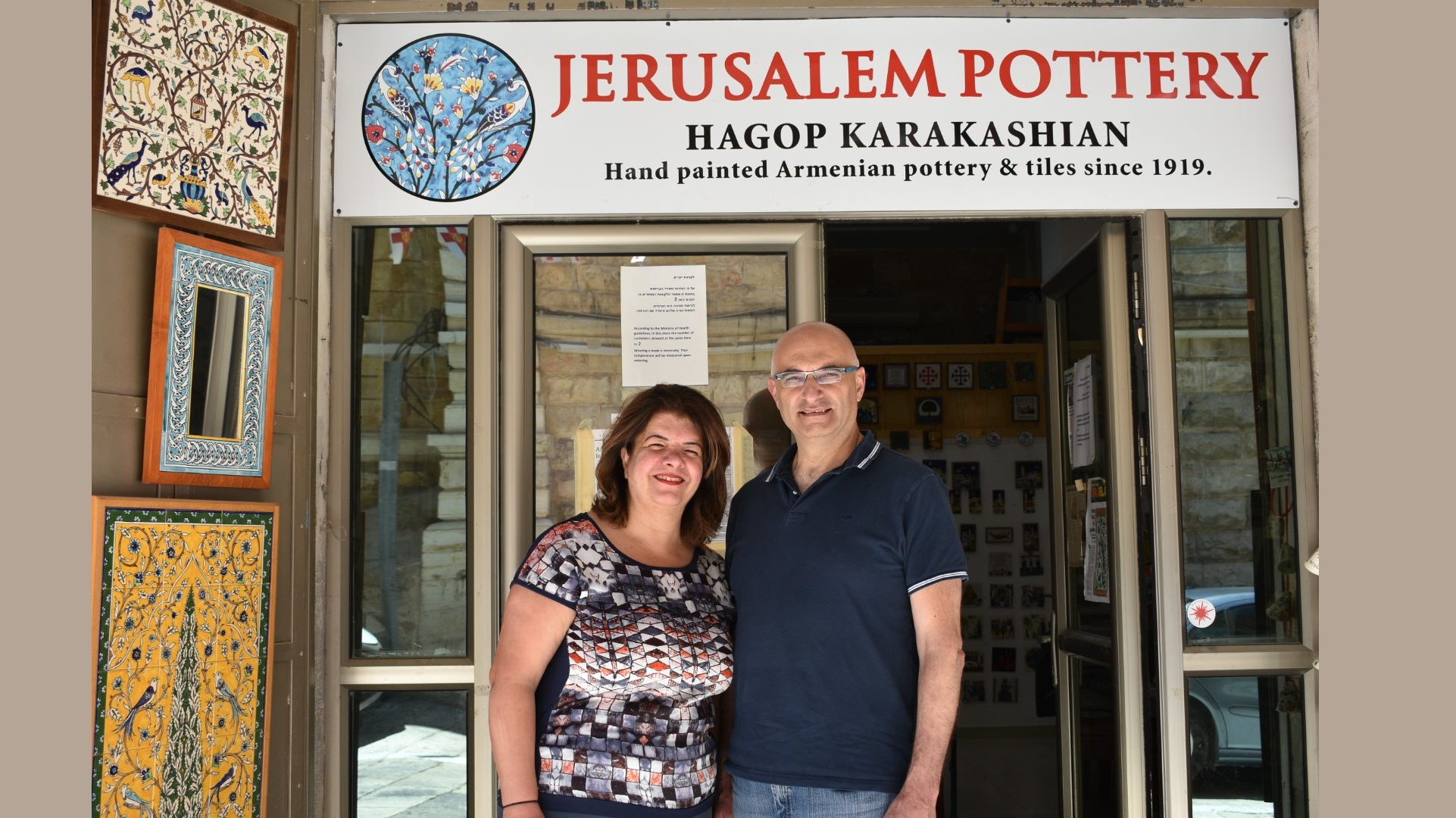The Armenian Ceramicists That Changed the Face of Jerusalem (VIDEO REPORT)
Hagop Karakashian, third-generation survivor of Armenian genocide, preserves unique hand-painted craft
Sitting in the studio of his shop in Jerusalem’s Old City, Hagop Karakashian holds a paintbrush gingerly in one hand as he carefully paints a bird onto a large white plate.
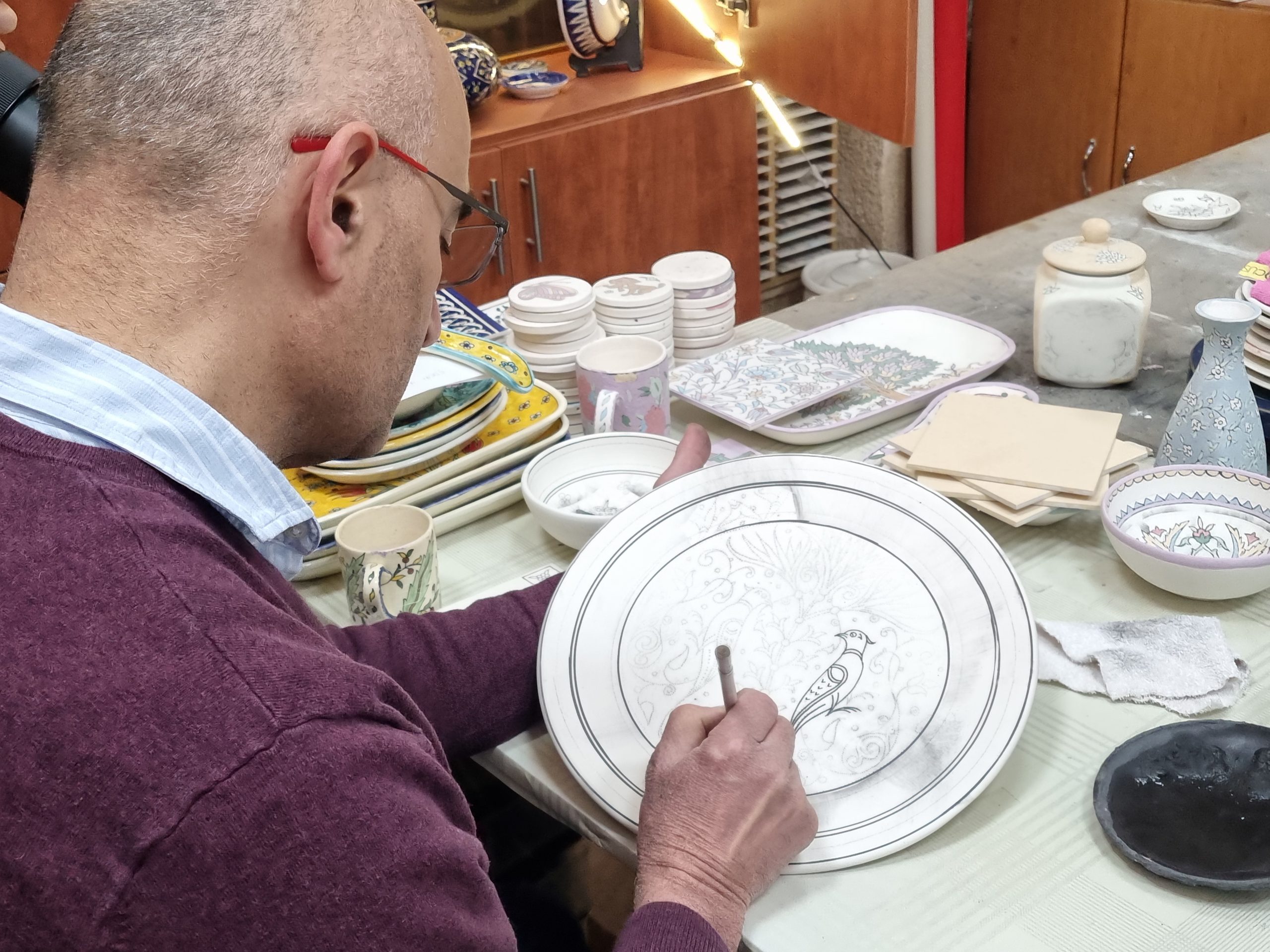
Hagop Karakashian works on a hand-painted plate in his shop. (Maya Margit/The Media Line)
Surrounded by a colorful medley of plates and tiles, Karakashian, in his mid-50s, is intent on preserving this unique craft that has been practiced in Jerusalem for over a century.
Beautifully hand-painted pottery, tiles and street signs decorated with delicate floral patterns and animals adorn “Jerusalem Pottery,” his shop in the Armenian Quarter.
Karakashian is a third-generation Armenian ceramicist and member of one of the three founding families of Armenian ceramicists in the Holy Land. While both he and his father were born and raised in Jerusalem, his grandfather Megerditch Karakashian came from the Turkish city of Kütahya, a place that was once replete with Armenian artists.
The amazing journey of these three families – the Ohannessians, Balians, and Karakashians – begins in 1919. Sir Ronald Storrs, the then-British military governor of Jerusalem during Mandatory Palestine, invited them to Jerusalem to help restore the Dome of the Rock and replace some 48,000 tiles.
“[There are] two reasons why they leave Turkey: there’s a job in Jerusalem and there’s the Armenian genocide going on back home,” Karakashian told The Media Line. “They leave just in time because back in their city the governor, who was pro-Armenian, was replaced by one who was going to carry out the deportation and the massacres.”
But the Dome of the Rock project did not go as planned; the Waqf, the local Muslim authority, decided that they were not pleased with the idea of Christian Armenians working on one of Islam’s holiest sites.
Despite it getting scrapped, the three Armenian families decided to stay in Jerusalem and found their own art studio.
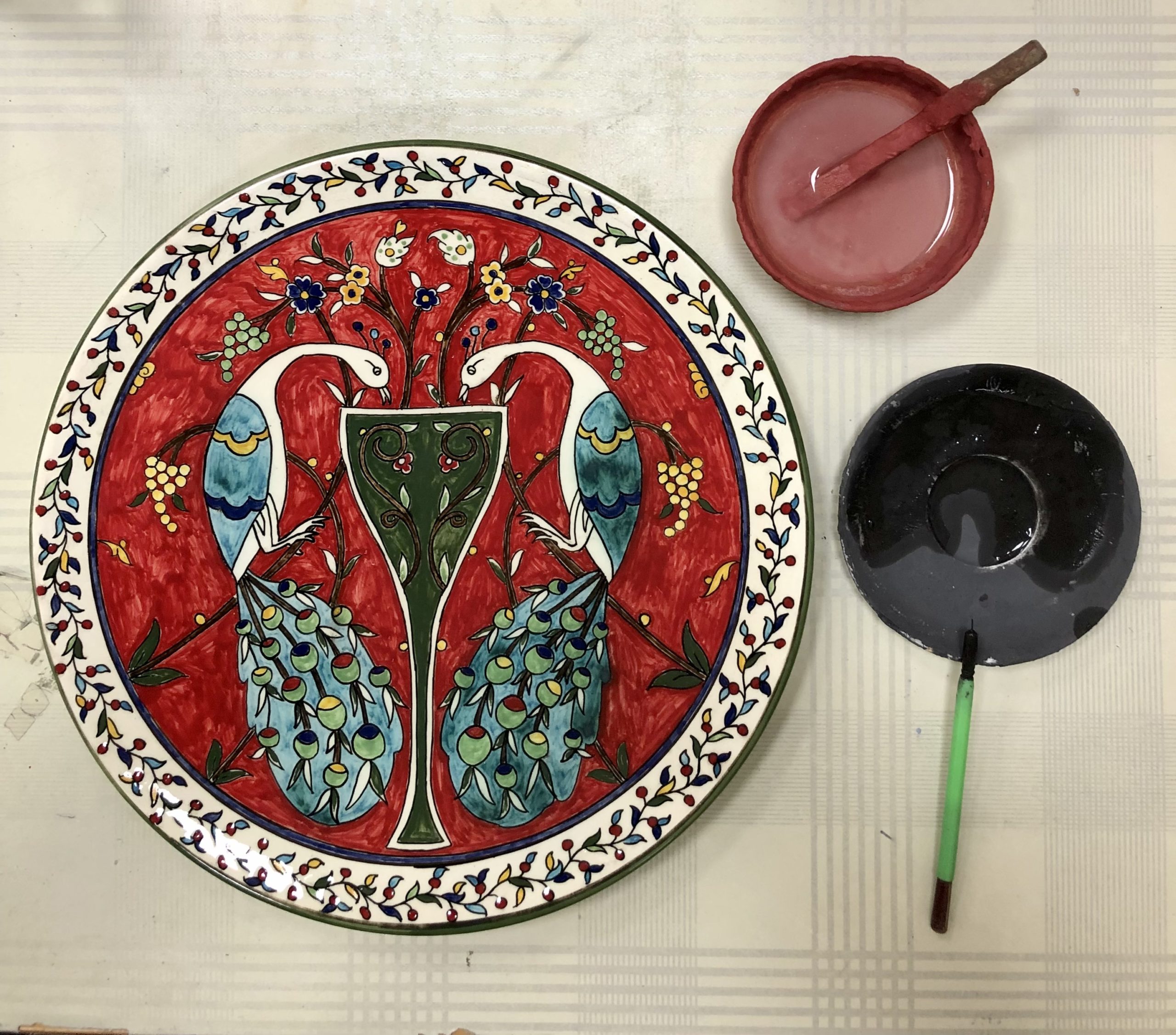
A hand-painted ceramic plate from Karakashian’s studio. (Courtesy)
“The three artists work together and start producing Armenian pottery in Jerusalem for the first time,” Karakashian recounted. “That’s the important point: it didn’t exist before they came.”
While the Ohanessians left in 1948 due to the Arab-Israeli War, Neshan Balian and Megerditch Karakashian continued to work together until 1964. During this period, they did tile work for several notable sites around Jerusalem, including an impressive façade for the Cathedral of Saint James, a 12th-century Armenian church in the heart of the Old City.
In 1964, the second generation of Karakashians split from the Balians and opened their own workshop.
“In 1966, they got a commission from the Jordanians in Jerusalem to make all the street signs in the Old City,” Karakashian related. “They made them in Arabic and English.”
After Israel reunified Jerusalem following the Six-Day War in 1967, then-Jerusalem Mayor Teddy Kollek requested that Hebrew be added to all the street signs. To this day, a line separating the Hebrew from the English and Arabic names is visible on many signs around the Old City, clearly demarcating the pre- and post-1967 periods in Israeli history.
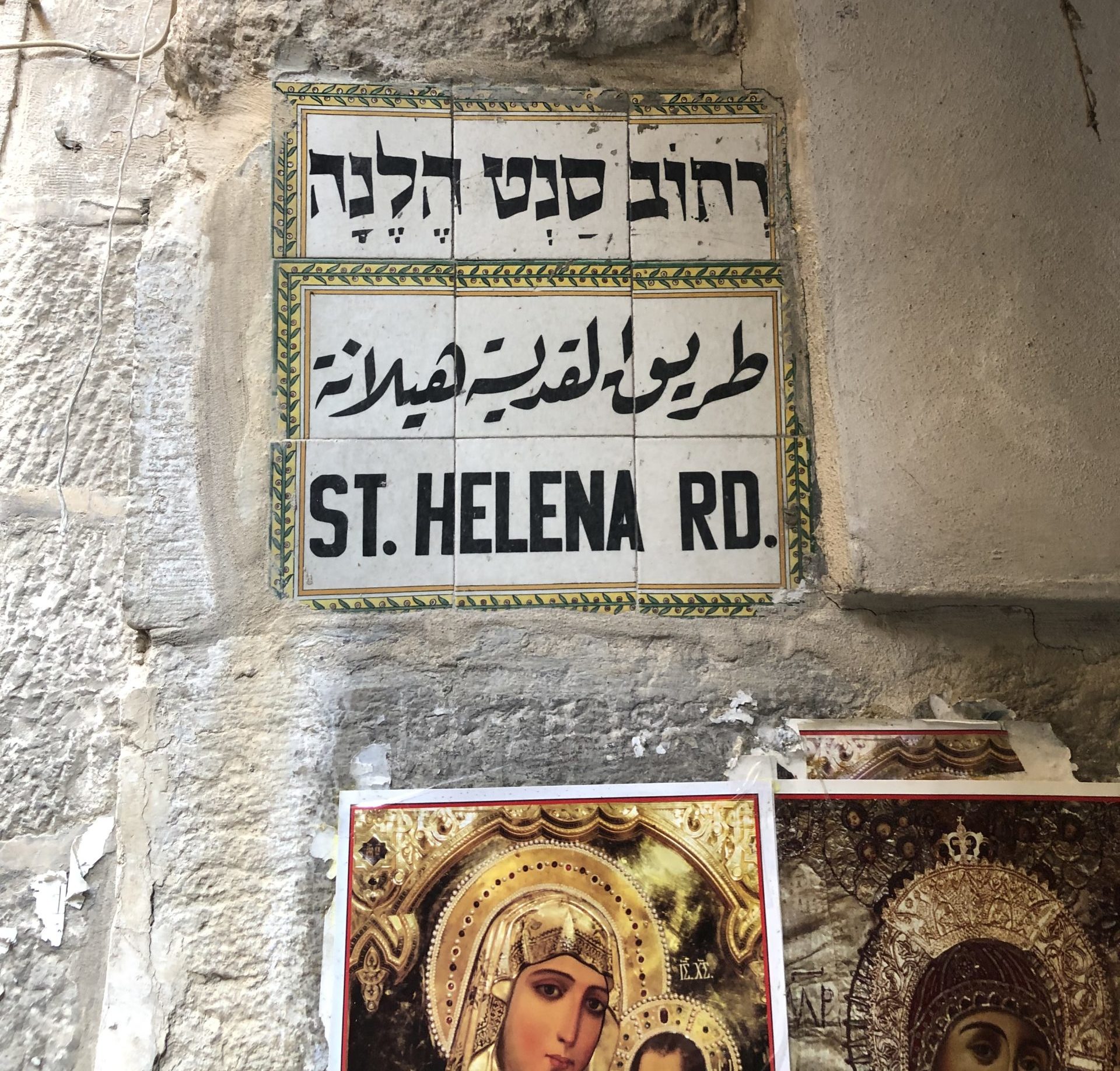
A street sign made by the Karakashian family in Jerusalem’s Old City in three languages. A line separates the Hebrew from the Arabic and English, indicating the pre- and post-1967 eras. (Courtesy)
Armenian art takes on Jerusalem flavor
The street signs were not the only thing that changed.
Under Islamic law in Turkey, Armenian potters were forbidden from portraying living creatures; however once they took root in Jerusalem their art was able to flourish in new and exciting ways. From focusing almost exclusively on floral patterns, ceramicists began to depict an array of intricate compositions featuring animals. One of the more popular motifs, according to Karakashian, is the peacock, a traditional symbol of longevity.

An array of ceramic paints sits next to an unfinished tile depicting a traditional peacock motif. (Courtesy)
Hagop’s wife Tzoghig, an artist herself, has also taken on the mantle and developed a modern style of painting.
“I started by chance because I love the colors,” she told The Media Line. “When I saw the first plate I said, ‘wow it’s very nice,’ so I started doing it.”
Jerusalem’s ancient Armenian community experienced a revival in the early 20th century as thousands of survivors of the genocide fled to the city in search of refuge. The community has declined for a number of reasons over the decades, with many members of the younger generation having immigrated to places like Canada, the United States, or Australia.
These days only about 1,200 Armenians remain in the Holy Land, Karakashian estimates, with the majority living in the Armenian Quarter.
“I have many friends that have left,” Karakashian affirmed. “I have two sisters who live in California. It’s not easy being here as an Armenian.”
As for the Armenian potters in Kütahya, whose traditional craft dates all the way back to the 15th century, none are left.
Karakashian said he plans on visiting the city in the near future. Most of all, he hopes that his daughter – who is also a ceramicist – will keep the unique art of Armenian ceramics, which has become inextricably linked to Jerusalem’s history, alive.
“I am Armenian,” he stated. “I survived the genocide because my grandfather came here. He founded this art in Jerusalem and now I walk to work every day in the morning, look up at the walls and I see my father’s street signs.
“Yes, there is a deep connection and I want to share it with the rest of the world,” he said.
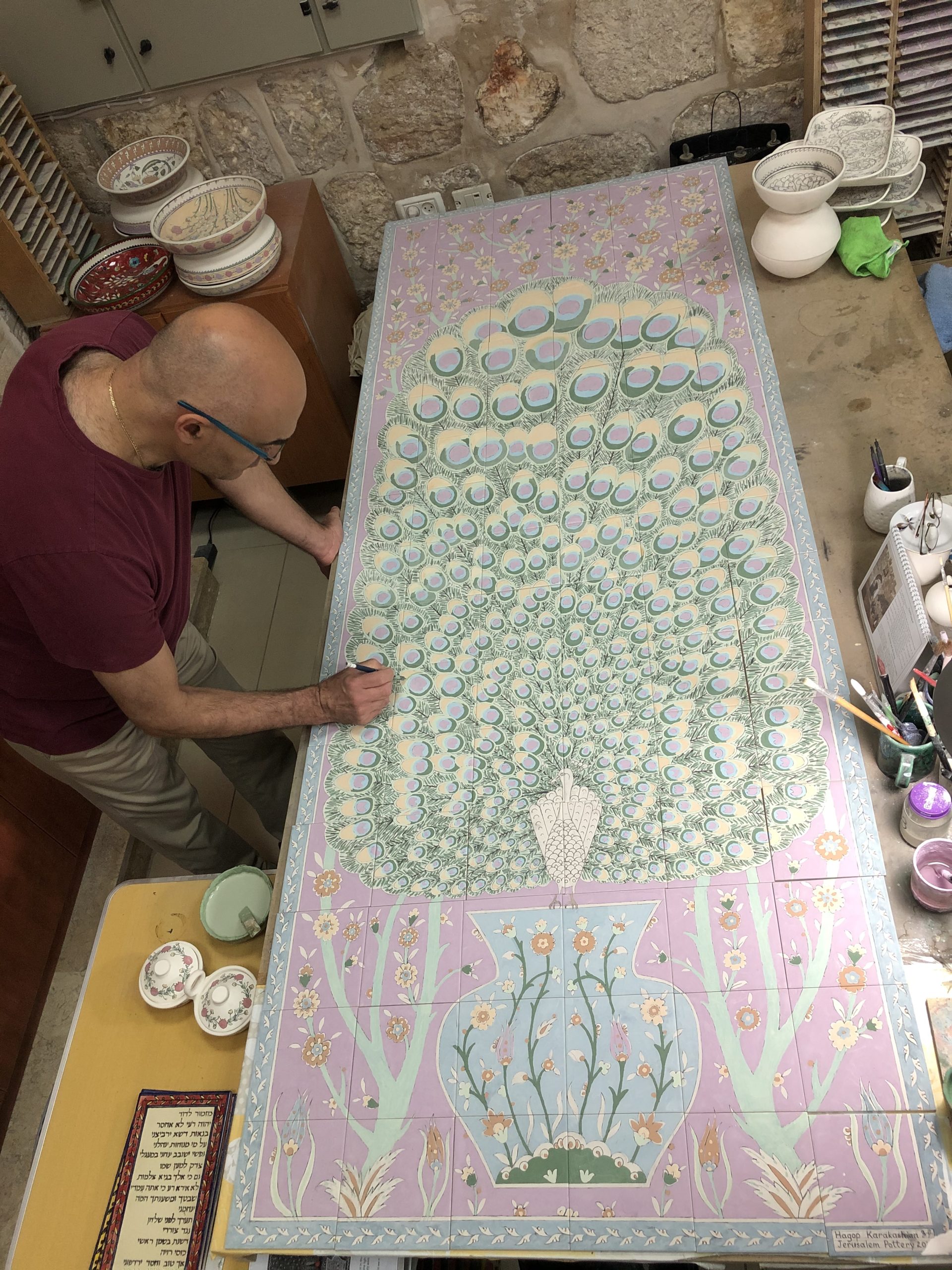
Hagop Karakashian painting a large work. (Courtesy)

